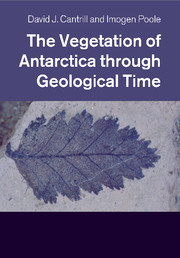The Vegetation of Antarctica through Geological Time
Langue : Anglais
Auteurs : Cantrill David J., Poole Imogen

Looks at the fossil plant history of Antarctica and its relationship to the global record of environmental and climate change.
The fossil history of plant life in Antarctica is central to our understanding of the evolution of vegetation through geological time and also plays a key role in reconstructing past configurations of the continents and associated climatic conditions. This book provides the only detailed overview of the development of Antarctic vegetation from the Devonian period to the present day, presenting Earth scientists with valuable insights into the break up of the ancient supercontinent of Gondwana. Details of specific floras and ecosystems are provided within the context of changing geological, geographical and environmental conditions, alongside comparisons with contemporaneous and modern ecosystems. The authors demonstrate how palaeobotany contributes to our understanding of the paleoenvironmental changes in the southern hemisphere during this period of Earth history. The book is a complete and up-to-date reference for researchers and students in Antarctic paleobotany and terrestrial paleoecology.
1. Introduction; 2. Colonization of the land; 3. Deglaciation and colonization of the South Pole; 4. Mass extinction and life in the Triassic; 5. Continental break up and its impact on Jurassic vegetation; 6. Fern-conifer dominated lower Cretaceous (Aptian-Albian) ecosystems and the angiosperm invasion; 7. The origin of southern temperate ecosystems; 8. The heat is on: Paleogene floras and the Paleocene-Eocene warm period; 9. After the heat: late Eocene to Pliocene climatic cooling and modification of the Antarctic vegetation; Index.
David J. Cantrill is Chief Botanist and Director of the National Herbarium of Victoria at the Royal Botanic Gardens Melbourne, Australia. Throughout his academic life he has undertaken extensive work across the southern hemisphere, particularly Antarctica, researching fossil floras from the Permian to early Cenozoic. His research into Antarctic biotas has concentrated on the systematic composition of floras, paleoecology, the role of Antarctica in mediating climate and biogeographic patterns during Gondwana break up and developing present day patterns of austral plant distribution.
Imogen Poole is a Senior Research Fellow at Utrecht University and Honorary Research Fellow at the University of Aberdeen. She has worked extensively on paleoenvironmental and paleoclimatic interpretations of Cretaceous and younger floras from both hemispheres. A particular focus of her research has been determining the floristic composition of high latitude Antarctic floras and reconstructing the paleoenvironment and climate of these early angiospermous ecosystems. She has also been actively involved in conservational issues relating to tourism and human impacts in Antarctica and has authored articles for the popular press.
Imogen Poole is a Senior Research Fellow at Utrecht University and Honorary Research Fellow at the University of Aberdeen. She has worked extensively on paleoenvironmental and paleoclimatic interpretations of Cretaceous and younger floras from both hemispheres. A particular focus of her research has been determining the floristic composition of high latitude Antarctic floras and reconstructing the paleoenvironment and climate of these early angiospermous ecosystems. She has also been actively involved in conservational issues relating to tourism and human impacts in Antarctica and has authored articles for the popular press.
Date de parution : 03-2018
Ouvrage de 490 p.
17.2x24.5 cm
Date de parution : 11-2012
Ouvrage de 490 p.
17.8x25.2 cm
Thème de The Vegetation of Antarctica through Geological Time :
© 2024 LAVOISIER S.A.S.
